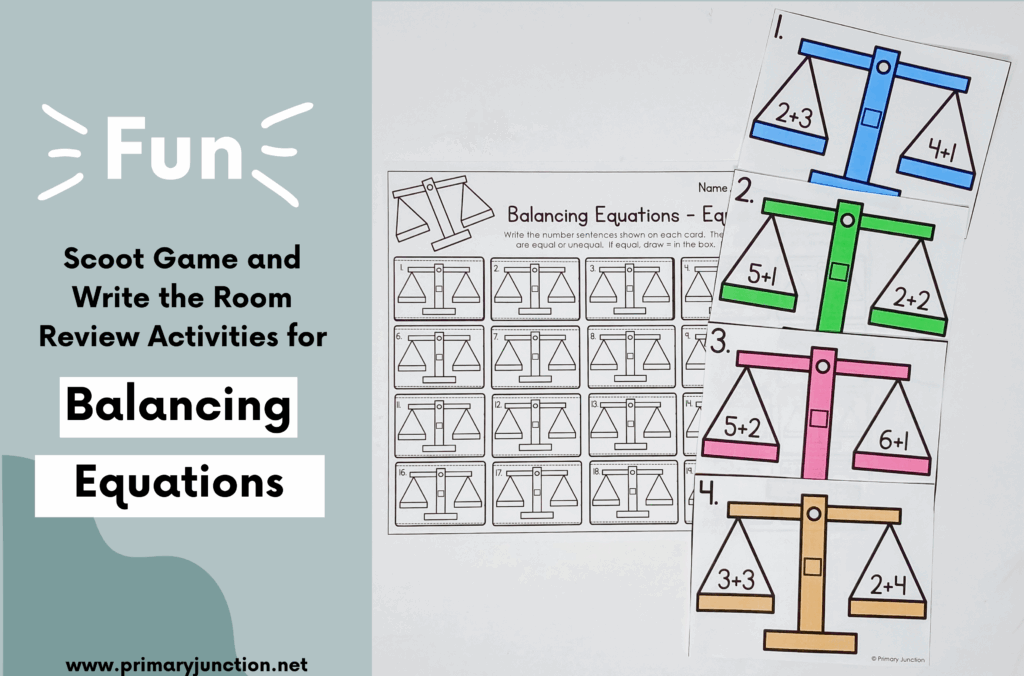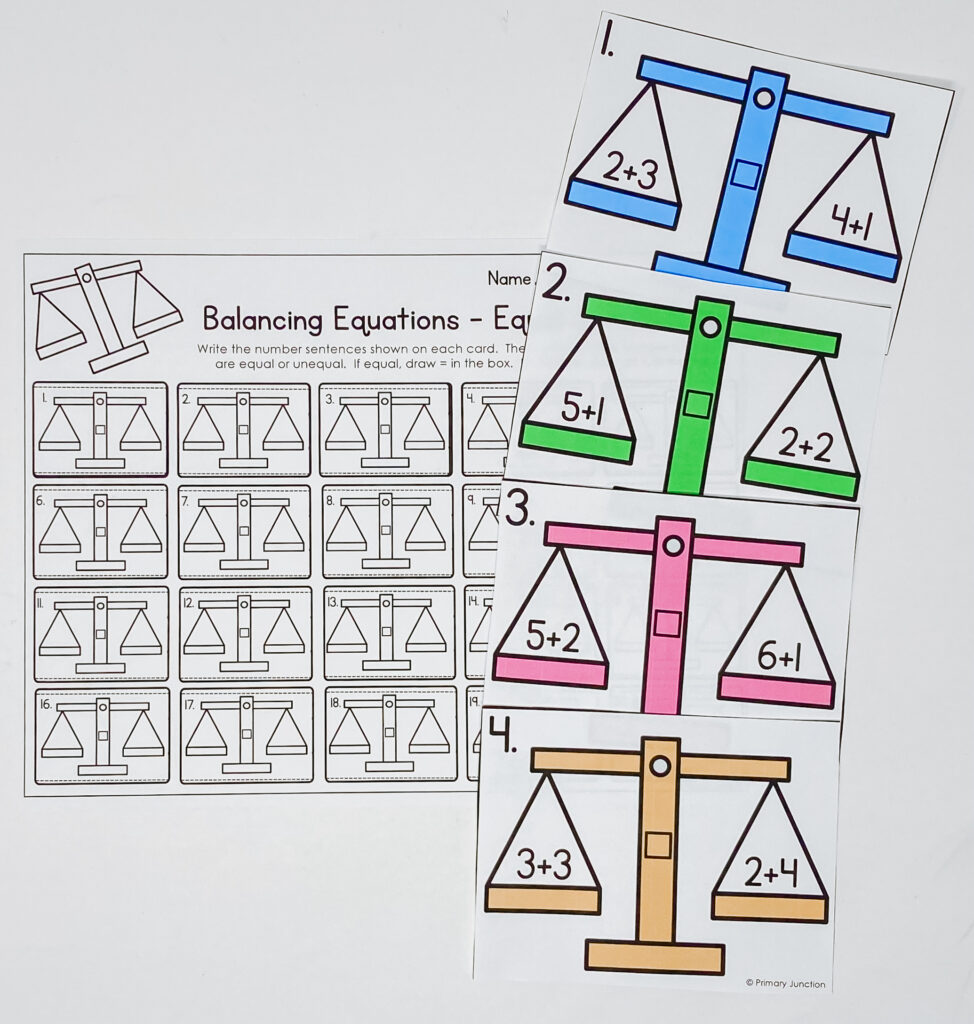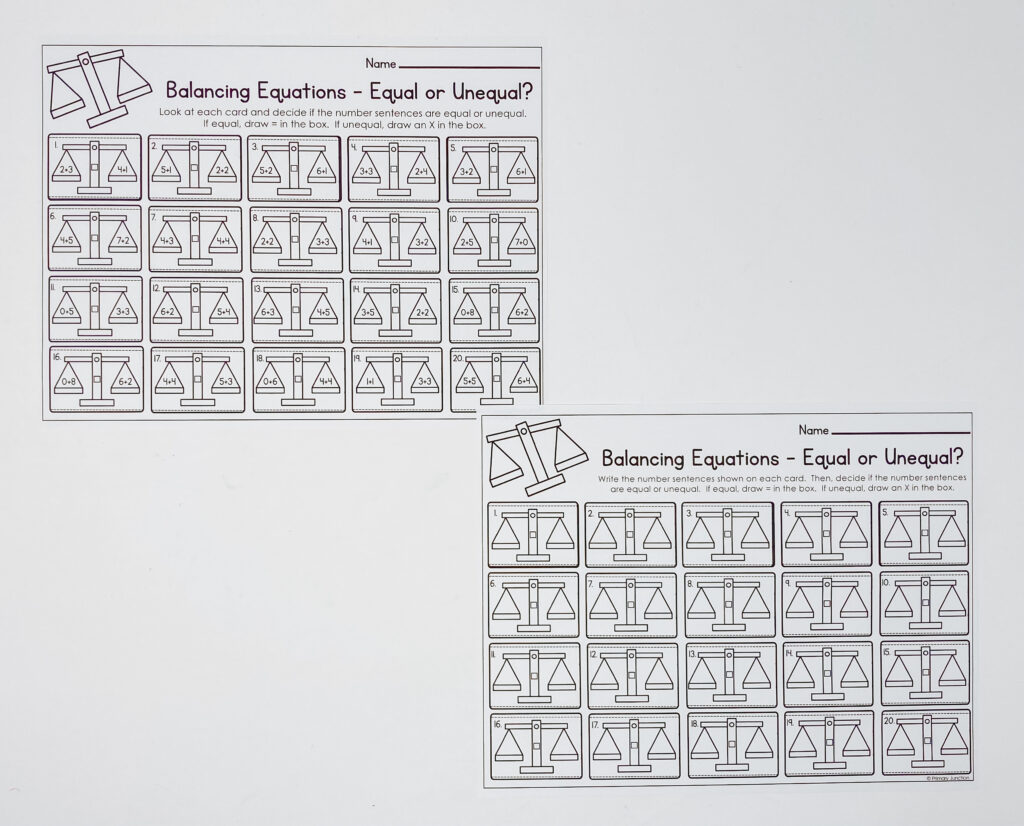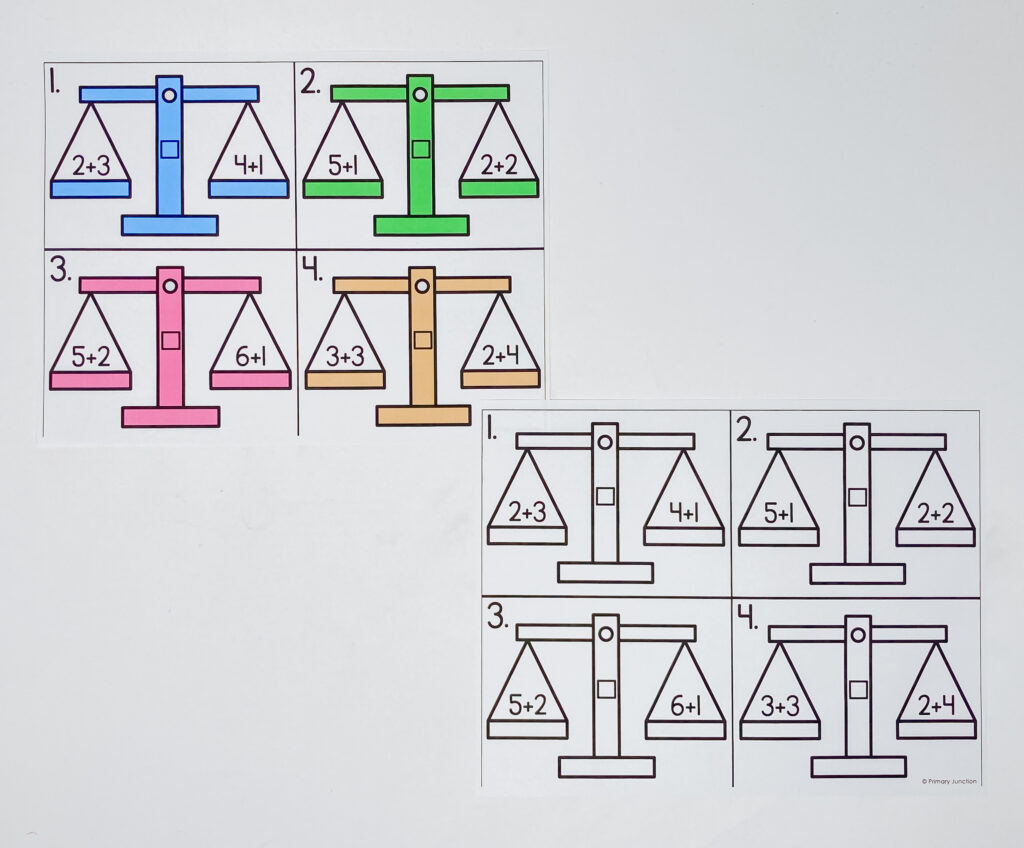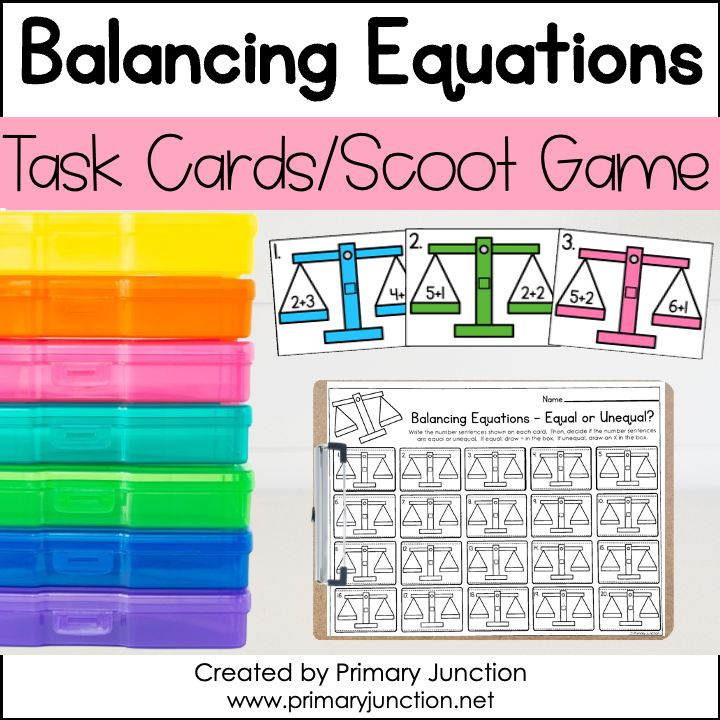Balancing Equations Made FUN with This Balancing Equations Scoot Game Activity
Okay, teacher friend — let’s talk about balancing equations.
If your first graders are anything like mine, they need to move. Sitting still while trying to wrap their heads around equal and unequal number sentences? Not gonna happen. That’s exactly why this Balancing Equations Scoot Game has become one of my go-to activities for making this tricky concept actually click — and making it fun in the process.
You know I’m all about turning any concept into a game, especially one that gets them out of their seats.
So What Is Balancing Equations?
It sounds fancy, but at the first grade level, it’s really just helping our students understand that both sides of the equal sign need to have the same value — and if they don’t, we mark it as unequal. That’s where this activity comes in.
Each task card gives students two number sentences. They have to decide:
Are the equations equal (balanced)? Or unequal (unbalanced)?
If the number sentences are equal, they write an equal sign (=).
If they’re not equal, they write a big X. That’s it!
Simple, clear, and super effective.
Three Ways to Use This Balancing Equations Scoot Game
What I love about this Balancing Equations Scoot Game is how flexible it is. You can use the same exact set of task cards in so many different ways depending on the energy level, the time you’ve got, and your lesson structure for the day:
1. Scoot Game
Classic, whole-class style. You tape a card to each desk, give each student a recording sheet, and let them “scoot” from one card to the next. I usually play some music to keep the pace up and make it feel more like a game. Honestly, they live for this.
2. Write the Room Math Center
Just tape the cards around the room and let students walk around with clipboards. This is my go-to for early finishers or math rotations. It’s less structured than Scoot but still super engaging — especially for those kids who are always looking for a reason to move.
3. Solve the Room Math Center
This one is great if you want to add a little mystery or challenge. Hide the task cards in different places around the room and let students go on a little “math hunt.” It’s like a mini scavenger hunt but with academic purpose. First graders think it’s the coolest thing ever.
Why It Works So Well
This isn’t just busy work. Students are practicing comparing two equations, doing the math for both, and really thinking about whether or not they’re balanced. That’s deep thinking for little learners — and when they get to move while doing it? That’s a win in my book.
Also… let’s be honest. Getting to write a big ol’ X when something’s unequal? They think that’s super satisfying.
Low Prep = High Engagement
The best part? It comes with both color and black-and-white versions of the task cards (because #teacherlife and ink-saving are real things). There are also two different recording sheet options depending on how much writing you want them to do.
Sometimes I just want them to show whether the equations are equal or not. Other times, I want them to write out the number sentences to show that deeper understanding. Having both options makes it easy to adjust.
If you’ve been trying to make balancing equations stick — without pulling your hair out — this Scoot game, write the room math center, or solve the room math center might just be your new favorite thing. It’s hands-on, movement-based, and actually fun.
Your students will get meaningful practice with task cards that are flexible enough to use again and again throughout the year. (Plus, they’ll beg to play it again. Ask me how I know. 😉). If you want to grab a copy to use with your class, you can get it here. Happy Learning!

